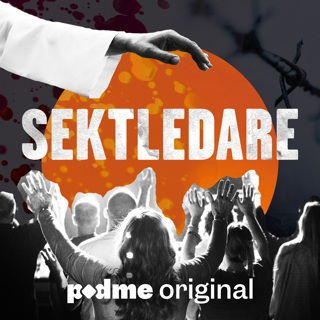
Ep. 402 Immunotherapy in HCC: Evolving Treatment Paradigms with Dr. Edward Kim and Dr. Terence Gade
In this episode, Dr. Tyler Sandow (Ochsner Health) interviews interventional radiologists Dr. Edward Kim (Mount Sinai) and Dr. Terence Gade (University of Pennsylvania) about the future directions of hepatocellular carcinoma (HCC) treatments, specifically focusing on the adoption of precision medicine and multidisciplinary approaches. They delve into various HCC treatments, such as locoregional therapies like transarterial chemoembolization (TACE) and transarterial radioembolization (TARE), as well as the roles of systemic immunotherapies and checkpoint inhibitors. They highlight the importance of sequential order and timing of treatments and the use of imaging biomarkers for individualized cancer care. Throughout the discussion, influential clinical trials in HCC treatment are discussed and summarized. The doctors unanimously agree that as the sphere of interventional oncology is rapidly evolving, the focus should be centered on providing the most effective and patient-specific care with a deep understanding of combination therapies. --- CHECK OUT OUR SPONSOR AstraZeneca https://www.astrazeneca-us.com/ --- SHOW NOTES 00:00 - Introduction 05:45 - The Beginnings of Systemic Therapy for HCC 08:28 - The Role of Immunotherapy in HCC Treatment 11:09 - Multidisciplinary Clinics and Tumor Boards 20:21 - The Society of Interventional Oncology and Treatment Guidelines 24.59 - Choosing Between Locoregional and Combination Therapies 39:17 - The Use of Immunotherapy in Early Stage Patients 42:08 - Current Safety Data for Immunotherapy 48.56 - TACE Drug Choice 53:16 - How to Approach Treatment of Multifocal or Large Tumors 01:00 - Timeline for Imaging to Assess Treatment Response 01:03 - The Future of Immunotherapy and Interventional Oncology --- RESOURCES Society of Interventional Oncology (SIO): https://www.sio-central.org/ Sorafenib in Advanced Hepatocellular Carcinoma (SHARP Trial) https://www.nejm.org/doi/full/10.1056/nejmoa0708857 Efficacy and Safety of Sorafenib in Patients in the Asia-Pacific region with Advanced Hepatocellular Carcinoma: https://pubmed.ncbi.nlm.nih.gov/19095497/ Efficacy and Safety of Nivolumab Plus Ipilimumab in Patients With Advanced Hepatocellular Carcinoma Previously Treated With Sorafenib (CheckMate 040 Trial): https://jamanetwork.com/journals/jamaoncology/fullarticle/2771012 Tremelimumab and Durvalumab as First-line Therapy in Patients with Unresectable Hepatocellular Carcinoma (HIMALAYA Trial): https://ascopubs.org/doi/10.1200/JCO.2022.40.4_suppl.379 Atezolizumab plus Bevacizumab in Unresectable Hepatocellular Carcinoma (IMbrave 150 Trial): https://www.nejm.org/doi/full/10.1056/nejmoa1915745 Lenvatinib Combined With Transarterial Chemoembolization as First-Line Treatment for Advanced Hepatocellular Carcinoma (LAUNCH Trial): https://ascopubs.org/doi/abs/10.1200/JCO.22.00392 Randomised, Multicentre Prospective Trial of Transarterial Chemoembolisation Plus Sorafenib as Compared with TACE Alone in Patients with Hepatocellular Carcinoma (TACTICS Trial): https://pubmed.ncbi.nlm.nih.gov/31801872/ Uncoupling Immune Trajectories of Response and Adverse Events from Anti-PD-1 Immunotherapy in Hepatocellular Carcinoma: https://pubmed.ncbi.nlm.nih.gov/35430299/ Personalised Versus Standard Dosimetry Approach of Selective Internal Radiation Therapy in Patients with Locally Advanced Hepatocellular Carcinoma (DOSISPHERE-01 Trial): https://pubmed.ncbi.nlm.nih.gov/33166497/ Radiation Segmentectomy for Curative Intent of Unresectable Very Early to Early Stage Hepatocellular Carcinoma (RASER Trial): https://www.thelancet.com/journals/langas/article/PIIS2468-1253(22)00091-7/fulltext Immunotherapy and Transarterial Radioembolization Combination Treatment for Advanced Hepatocellular Carcinoma: https://journals.lww.com/ajg/abstract/2023/12000/immunotherapy_and_transarterial_radioembolization.23.aspx Find this episode on BackTable.com to see additional resources.
8 Jan 20241h 13min

Ep. 401 The MOTION Study: Cryoablation for Painful Bone Metastases with Dr. Jack Jennings
In this episode of the BackTable Podcast, host Dr. Jacob Fleming and guest Dr. Jack Jennings discuss advancements in interventional oncology, specifically regarding cryoablation for bone metastases. Dr. Jennings is an interventional musculoskeletal radiologist at Washington University School of Medicine and President of the American Society of Spine Radiology. They discuss the results of the MOTION Study, the benefits of industry collaboration, and the future of robotic guidance systems in interventional procedures. They also explain techniques like hydrodissection and pneumodissection in detail. With constant advancements in technology such as guidance navigation systems to reduce pain from bone metastases, it is crucial for interventional radiologists to adapt to these changes. At the end of the episode the doctors give a shout out to the upcoming Society of Interventional Oncology (SIO) 2024 meeting and the enriching opportunities that it offers for interventional radiologists. --- CHECK OUT OUR SPONSOR Boston Scientific Visual ICE Cryoablation System https://www.bostonscientific.com/en-US/products/cryoablation/visual-ice.html --- SHOW NOTES 00:00 - Introduction 02:25 - Overview of the MOTION Study 04:23 - Benefits and Challenges of Cryoablation 09:37 - Results of the MOTION Study 12:13 - Future of Interventional Oncology 19:38 - Role of Imaging Guidance in Cryoablation 23:07 - Future of Robotic Guidance Systems 31:40 - Importance of Industry Partnerships --- RESOURCES Society of Interventional Oncology Annual Meeting, Long Beach, CA January 25th-29th: https://www.sio-central.org/Events/Annual-Scientific-Meeting/Registration Interventional Oncology MOTION Multicenter Study: https://www.bostonscientific.com/en-EU/medical-specialties/interventional-radiology/interventional-oncology/latest-evidence/motion-study.html Percutaneous image-guided cryoablation of painful metastases involving bone: multicenter trial: https://pubmed.ncbi.nlm.nih.gov/23065947/ Cryoablation Needles from Boston Scientific: https://www.bostonscientific.com/en-US/products/cryoablation/visual-ice/visual-ice-cryoablation-needles.htm
5 Jan 202436min

Ep. 400 Intra-Arterial Approaches in Tumor Therapy: Overcoming the Blood-Brain Barrier with Dr. Piotr Walczak and Dr. Prakash Ambady
In this episode of the Backtable Podcast, guest host Dr. Paul Bhogal, a consultant interventional neuroradiologist at Royal London Hospital in the UK, and guests Dr. Piotr Walczak and Dr. Prakash Ambady discuss the potential of intra-arterial treatments combined with blood brain barrier (BBB) manipulation in treating various neurological conditions and tumors. The trio of doctors discuss methods such as the use of hyperosmolar mannitol and focused ultrasound to breach the BBB and deliver drugs directly to the brain tissue. Dr. Walczak and Dr. Ambady also highlight their individual research areas, including therapies involving cell delivery and engineered cells. The conversation also covers potential risks and new perspectives in comparison to current techniques such as whole-brain radiation. --- CHECK OUT OUR SPONSOR RADPAD® Radiation Protection https://www.radpad.com/ --- SHOW NOTES 00:00 - Introduction 05:44 - Challenges of Treating Glioblastoma Multiforme 12:52 - Understanding the Blood Brain Barrier 18:30 - Strategies to Negate the Blood Brain Barrier 20:52 - Blood Brain Barrier Disruption Using Intra-Arterial Mannitol 26:35 - Infusion Rates and Magnetic Resonance Guidance 33:47 - Role of Radiolabel Studies in Drug Delivery 36:31 - Future of Therapeutic Agents Design 47:54 - Potential of Focused Ultrasound in Drug Delivery 56:10 - Exploring the Use of Cells in Drug Delivery 58:44 - Future of Intra-Arterial Interventions --- RESOURCES Radiotherapy plus concomitant and adjuvant temozolomide for glioblastoma: https://pubmed.ncbi.nlm.nih.gov/15758009/ Effects of radiotherapy with concomitant and adjuvant temozolomide versus radiotherapy alone on survival in glioblastoma in a randomized phase III study: 5-year analysis of the EORTC-NCIC trial: https://pubmed.ncbi.nlm.nih.gov/19269895/ REMOVAL OF RIGHT CEREBRAL HEMISPHERE FOR CERTAIN TUMORS WITH HEMIPLEGIA - PRELIMINARY REPORT: https://jamanetwork.com/journals/jama/article-abstract/254927 Real-Time MRI Guidance for Reproducible Hyperosmolar Opening of the Blood-Brain Barrier in Mice: https://www.researchgate.net/publication/328537972_Real-Time_MRI_Guidance_for_Reproducible_Hyperosmolar_Opening_of_the_Blood-Brain_Barrier_in_Mice Dr. Piotr Walczak ResearchGate Profile: https://www.researchgate.net/profile/Piotr-Walczak-6 Dr. Prakash Ambday ResearchGate Profile: https://www.researchgate.net/profile/Prakash-Ambady Maculopathy Associated With Osmotic Blood- Brain Barrier Disruption and Chemotherapy in Patients With Primary CNS Lymphoma: https://pubmed.ncbi.nlm.nih.gov/32484895/ PET imaging of intra-arterial 89 Zr bevacizumab in mice with and without osmotic opening of the blood-brain barrier: distinct advantage of intra-arterial delivery: 10.2967/jnumed.118.218792 Safety of intra-arterial chemotherapy with or without osmotic blood–brain barrier disruption for the treatment of patients with brain tumors: https://www.ncbi.nlm.nih.gov/pmc/articles/PMC9307096/ Delivery of chemotherapeutics across the blood-brain barrier: challenges and advances: https://pubmed.ncbi.nlm.nih.gov/25307218/
3 Jan 20241h 6min

Ep. 399 Pros and Cons of Independence in the OBL with Dr. Mahmood Razavi and Dr. Mark Garcia
In this episode of The Backtable Podcast, host Dr. Aaron Fritts and guests Dr. Mahmood Razavi and Dr. Mark Garcia discuss the intricacies of owning and operating an outpatient-based lab (OBL). Dr. Razavi and Dr. Garcia are practicing interventional radiologists at Vascular and Interventional Specialists of Orange County (California) and American Vascular Associates (Florida), respectively. The doctors explore the advantages of OBLs, including autonomy, flexibility, and patient satisfaction. They also delve into the challenges of financial sustainability, decision-making restrictions, and insurance navigation. The conversation revolves around the need for a solid business plan before stepping into OBL operation. This includes awareness of potential regulatory oversight, costs, and patient sources. They also discuss the impact of OBLs on healthcare, and they specifically warn that the lack of evidence-based practices might have adverse effects. The doctors propose solutions such as societal guidelines, required accreditation, and stringent care delivery. --- CHECK OUT OUR SPONSOR Siemens Healthineers https://www.siemens-healthineers.com/ --- SHOW NOTES 00:00 - Introduction 04:26 - Pros and Cons of Owning and Operating in an OBL 11:07 - Financial Aspects and Profitability of OBLs 23:42 - Exploring Alternative Models for OBLs 32:33 - The Role of Societies in Guiding OBL Practices 36:27 - The Future of OBLs: Regulation, Consolidation, and Quality 42:59 - Exit Strategies and Future Considerations for OBLs 50:38 - Final Thoughts on OBLs and the Importance of Quality Care --- RESOURCES Impact of Office Based Laboratories on Physician Practice Patterns and Outcomes after Percutaneous Vascular Interventions for Peripheral Artery Disease: https://www.ncbi.nlm.nih.gov/pmc/articles/PMC8555658/pdf/nihms-1524412.pdf
1 Jan 202454min

Ep. 398 Scheduling Strategies for Clinicians: Flexibility and Transparency with Dr. Brandon St. Amant
In this episode of The Backtable Podcast, host Dr. Michael Barraza and guest Dr. Brandon St. Amant have an in-depth discussion about QGenda, an online scheduling solution. Both doctors practice interventional radiology at Radiology Associates in Baton Rouge, Louisiana. They discuss the initial setup process, from rule setting to managing shift assignments and creating transparency among the team. The key points of the conversation include the concept of the ‘holiday schedule’, the ‘buy sell system’ for open shifts, and making ‘longer schedules’ for predictability. The episode emphasizes the ongoing role of the scheduler and the need to build trust when transitioning to an electronic system like QGenda. --- CHECK OUT OUR SPONSORS Medtronic HawkOne Directional Atherectomy System https://www.medtronic.com/hawkone Reflow Medical https://www.reflowmedical.com/ --- SHOW NOTES 00:00 - Introduction 03:08 - The Challenges of Manual Scheduling 05:00 - Transition to QGenda 09:34 - The Role of Excel in Scheduling 22:06 - Handling Holiday Schedules 26:50 - Buy-Sell System for Shifts 33:17 - Final Tips for Effective Scheduling --- RESOURCES QGenda: https://www.qgenda.com/
29 Dec 202338min

Ep. 397 Embolización Prostática: ¿Merecemos Estar en las Guías Clínicas? con Dr. Iñigo Insausti Gorbea
En este episodio del podcast, el Dr. Iñigo Insausti Gorbea y la Dra. Sara Lojo Lendoiro, se centraron en la técnica de embolización prostática como alternativa mínimamente invasiva para el tratamiento de la hiperplasia benigna de próstata. Se detallaron los criterios de inclusión del paciente para poder realizar este procedimiento, las tasas de éxito y los riesgos potenciales. Además, se destaca la importancia de educar a los urólogos y médicos de atención primaria sobre este procedimiento, abogando por una mayor participación clínica de los intervencionistas en la atención al paciente. El Dr. Insausti también abordó la necesidad de que los radiólogos intervencionistas cuenten con consultas y camas propias, para los pacientes. Por último, en el episodio se habla sobre el futuro potencial de la embolización de próstata, incluida la introducción de materiales de embolización alternativos y la tasa de retratamiento de pacientes a largo plazo, en comparación con las opciones quirúrgicas. --- SHOW NOTES 00:00 - Introducción 01:43 - Comprender la hipertrofia prostática benigna 03:42 - Impacto en la calidad de vida de los pacientes 04:31 - Introducción a la embolización de la próstata. 06:25 - Candidatura del paciente para la embolización 07:29 - Comparación de embolización y cirugía. 11:08 - Riesgos asociados con la embolización de la próstata 14:51 - Tasas de éxito de la embolización de la próstata 24:17 - El futuro de la embolización de la próstata 45:01 - Conclusión y pensamientos finales
27 Dec 202348min

Ep. 396 How I Perform a Port Removal with Dr. Chris Beck
In this episode of the BackTable Podcast, hosts Dr. Aaron Fritts and Dr. Chris Beck discuss their Mediport removal workflows and the common challenges of a port removal procedure. Often seen as a significant milestone for cancer patients who have completed their treatment, successful Mediport removal requires a thorough understanding of the catheter and reservoir removal processes. This discussion covers tips and tricks for removing Mediports with minimal discomfort to the patient, effective anesthesia, careful dissection, and appropriate closure procedures. The hosts also emphasize the importance of preparing for unexpected scenarios such as catheter fractures or infection, and they outline strategies to effectively handle these complications. --- CHECK OUT OUR SPONSOR RADPAD® Radiation Protection https://www.radpad.com/ --- SHOW NOTES 00:00 - Introduction 03:06 - Overview of Mediport Removal 13:25 - Mediport Removal Procedure 20:59 - Procedural Challenges and Complications 22:12 - Infected Ports 30:17 - Stuck Ports 33:14 - Fractured Ports
25 Dec 202339min

Ep. 395 Radial to Peripheral Tools and Technique with Dr. Sameh Sayfo
In this episode of the Back Table Podcast, host Dr. Aaron Fritts and Dr. Sameh Sayfo discuss radial to peripheral interventions, also known as R2P. Dr. Sayfo is an interventional cardiologist and the program director of the endovascular fellowship at Baylor Heart Hospital in Plano, Texas. Dr. Sayfo points out the need for research data on the financial impact of these interventions on patients. Dr. Amit P. Amin’s work in 2017, 2018 and 2021 is highlighted for its valuable contribution in this area, specifically in the radial to coronary world. The conversation then veers into the possibilities for radial to peripheral interventions in the coming years. There’s a discussion about the potential financial impact on the healthcare system, and how radial to peripheral interventions may yield a lower length of stay and more same day discharges, which can serve as motivators for more practitioners to adopt this technology. The episode also highlights training, patient selection, complications, bailout techniques and post-procedure care related to radial to peripheral interventions. --- CHECK OUT OUR SPONSORS Surmodics Sublime Radial Access Platform https://sublimeradial.com/ Reflow Medical https://www.reflowmedical.com/ --- SHOW NOTES 00:00 - Introduction 04:40 - Discussion on Radial to Peripheral 15:52 - Addressing Hesitations about Radial Approach 25:24 - Crossing Complex Lesions: Challenges and Solutions 28:50 - Need for Research and Equipment Advancement 33:43 - Importance of Landmark Study in Radial to Peripheral 35:23 - Complications to Avoid and Bailout Techniques 40:53 - The Radial Movement and Future Prospects --- RESOURCES From Femoral to Radial Approach in Coronary Intervention: https://pubmed.ncbi.nlm.nih.gov/27401210/ Intravascular Lithotripsy for Peripheral Artery Calcification: 30-Day Outcomes From the Randomized Disrupt PAD III Trial: https://pubmed.ncbi.nlm.nih.gov/34167675/ Prospective, Multicenter Registry to Assess Safety and Efficacy of Radial Access for Peripheral Artery Interventions: https://www.jscai.org/article/S2772-9303(23)00813-X/fulltext Distal Versus Proximal Radial Artery Access for Cardiac Catheterization and Intervention: Design and Rationale of the DIPRA Trial: https://pubmed.ncbi.nlm.nih.gov/33926835/ Costs associated with transradial access and same-day discharge after percutaneous coronary intervention: a systematic review and meta-analysis: https://pubmed.ncbi.nlm.nih.gov/34258909/ The Value of Transradial: Impact on Patient Satisfaction and Health Care Economics: https://pubmed.ncbi.nlm.nih.gov/31733737/ Transradial Access for High-Risk Percutaneous Coronary Intervention: Implications of the Risk-Treatment Paradox: https://pubmed.ncbi.nlm.nih.gov/34253050/ Cost of coronary syndrome treated with percutaneous coronary intervention and 30-day unplanned readmission in the United States: https://pubmed.ncbi.nlm.nih.gov/31876371/ Terumo Radial Sheath: https://www.terumois.com/products/access/glidesheath-slender-introducer-sheath.html Cordis Radial Sheath: https://cordis.com/na/products/access/cardiology/rain-sheath-transradial-thin-walled-introducer Surmodic Radial Sheath: https://www.surmodics.com/
22 Dec 202343min






















